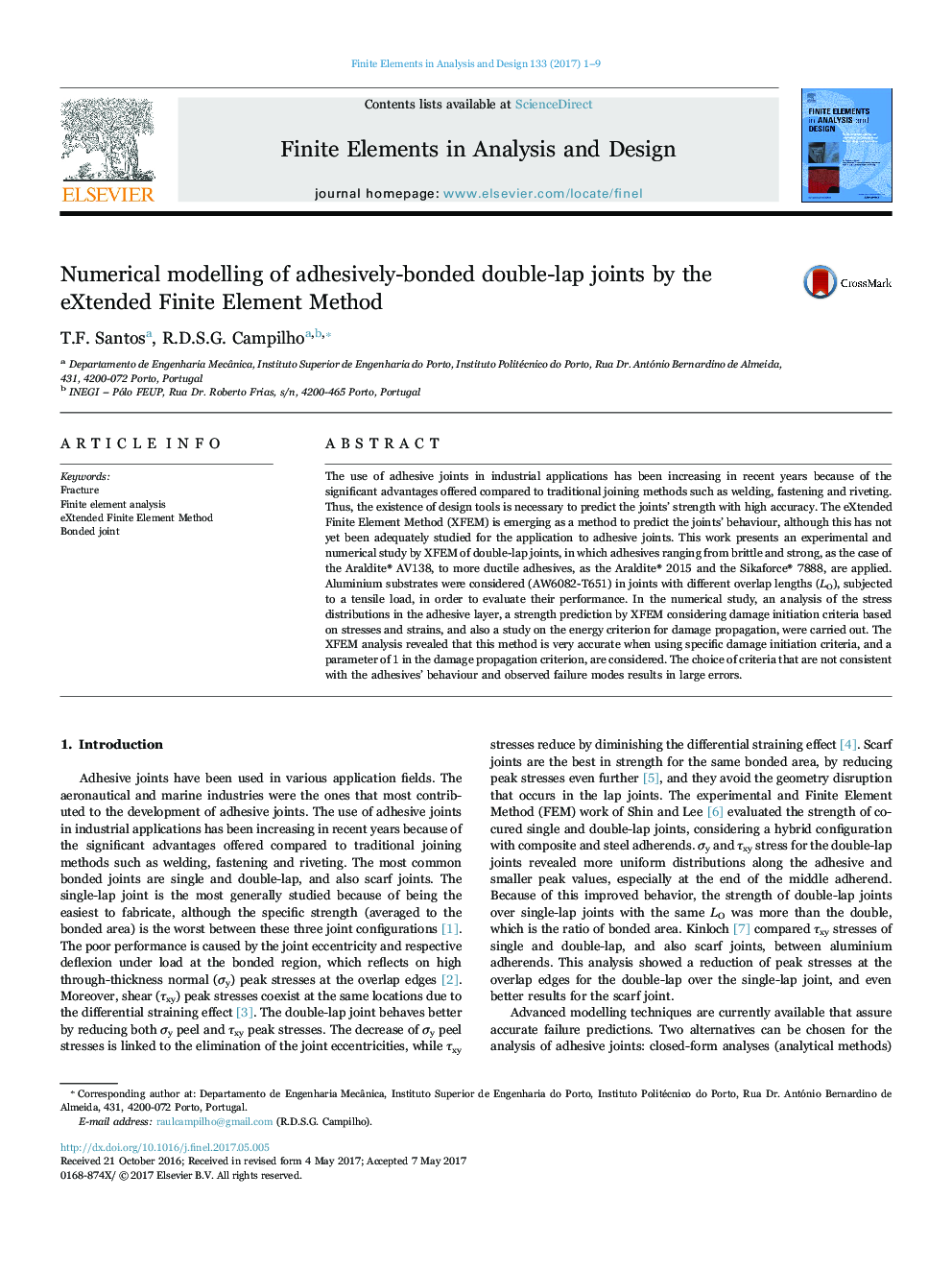| Article ID | Journal | Published Year | Pages | File Type |
|---|---|---|---|---|
| 4966170 | Finite Elements in Analysis and Design | 2017 | 9 Pages |
Abstract
The use of adhesive joints in industrial applications has been increasing in recent years because of the significant advantages offered compared to traditional joining methods such as welding, fastening and riveting. Thus, the existence of design tools is necessary to predict the joints' strength with high accuracy. The eXtended Finite Element Method (XFEM) is emerging as a method to predict the joints' behaviour, although this has not yet been adequately studied for the application to adhesive joints. This work presents an experimental and numerical study by XFEM of double-lap joints, in which adhesives ranging from brittle and strong, as the case of the Araldite® AV138, to more ductile adhesives, as the Araldite® 2015 and the Sikaforce® 7888, are applied. Aluminium substrates were considered (AW6082-T651) in joints with different overlap lengths (LO), subjected to a tensile load, in order to evaluate their performance. In the numerical study, an analysis of the stress distributions in the adhesive layer, a strength prediction by XFEM considering damage initiation criteria based on stresses and strains, and also a study on the energy criterion for damage propagation, were carried out. The XFEM analysis revealed that this method is very accurate when using specific damage initiation criteria, and a parameter of 1 in the damage propagation criterion, are considered. The choice of criteria that are not consistent with the adhesives' behaviour and observed failure modes results in large errors.
Related Topics
Physical Sciences and Engineering
Computer Science
Computer Science Applications
Authors
T.F. Santos, R.D.S.G. Campilho,
